Walls That Whisper: The Living Story of Tbilisi’s Street Art
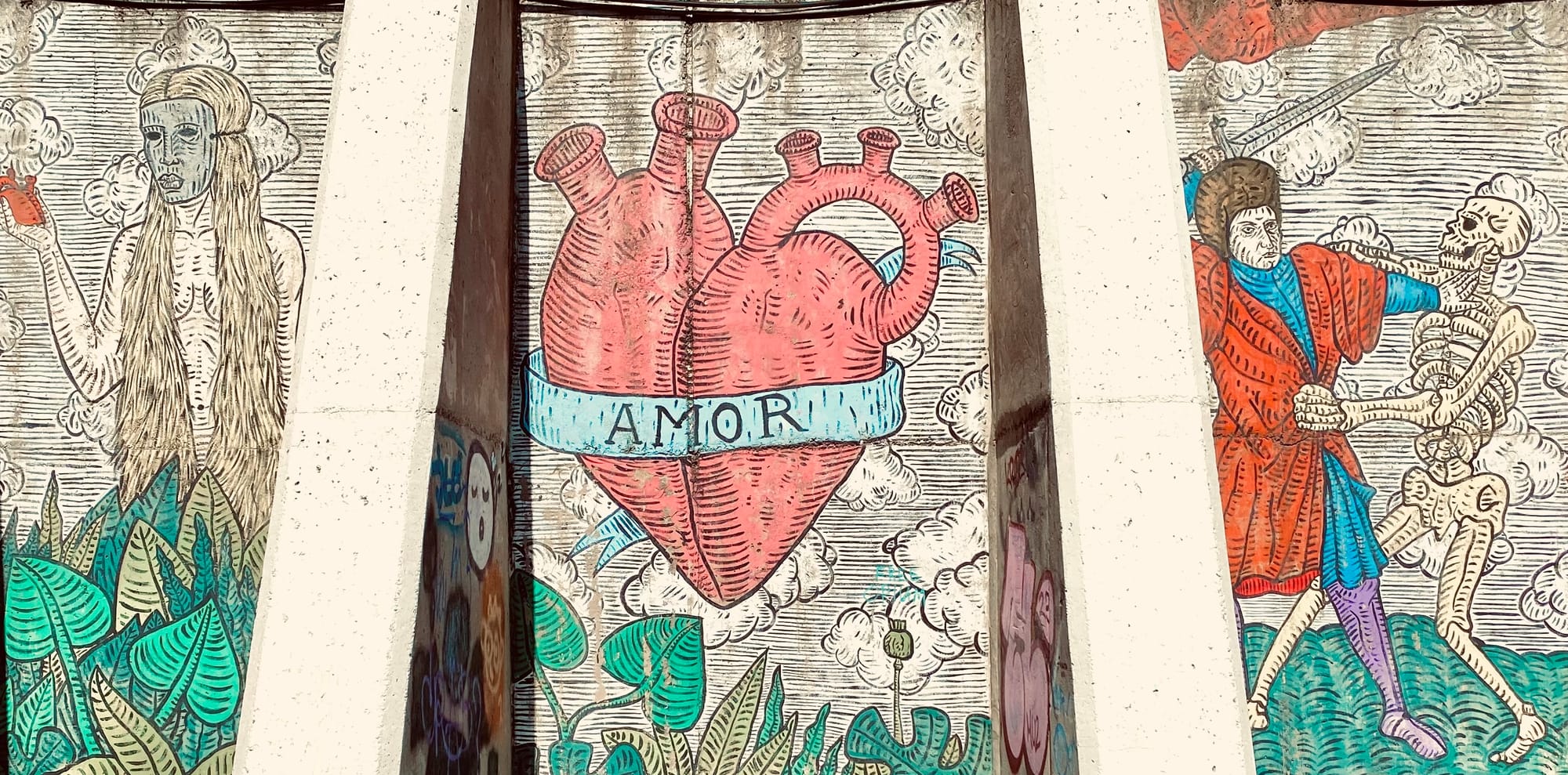
If the city of Tbilisi had a voice, it would probably sound like the vibrant, bold, and occasionally cheeky street art that colors its walls. Everywhere you look, graffiti and murals aren’t just decoration—they’re an ongoing conversation, a visual symphony telling tales of passion, tragedy, resilience, and identity.
En route to the gym, we wandered through the same tunnels that allow pedestrians to cross busy streets underground—a real genius move, Tbilisi—and found ourselves surrounded by walls covered in graffiti. In some of the dimly lit tunnels, only scattered spots of color and abstract forms emerged from the shadows, teasing our eyes. Other tunnels were cloaked in a soft, eerie darkness, where the faint glow of distant light transformed the walls into something deep, mysterious, and altogether otherworldly. Then there were the moments when the walls were flooded with natural or artificial light, and the art seemed to spring vividly to life—some pieces haunting, others frivolous, but all brimming with the unmistakable voice of their creators.
From a laptop, zoom out to see the full view of the video (by kjd, Tbilisi 2024)
Most of the art is magnificent: skillfully crafted murals by local artists who pour their heart and soul onto crumbling facades and fresh walls alike. These aren’t just random doodles or messy tags; they’re stories of everyday life, of love for the land and people, and of a culture fiercely proud of its roots. Walking through the city, we found find ourselves pulled in by bold colors, sweeping lines, and characters who seem to leap off the walls, begging us to pause and listen.
But the story gets even more fascinating when I noticed the tug-of-war etched into the very surfaces of the city. Political graffiti is everywhere—vivid reminders of Georgia’s precarious place caught between two giants. The ongoing struggle between Russia and the European Union (with its own resounding whispers of US influence) bubbles to the surface in spray paint and stencil art. These politically charged pieces give voice to a nation wrestling with its past, present, and future, a living map of tensions and dreams splattered on concrete.
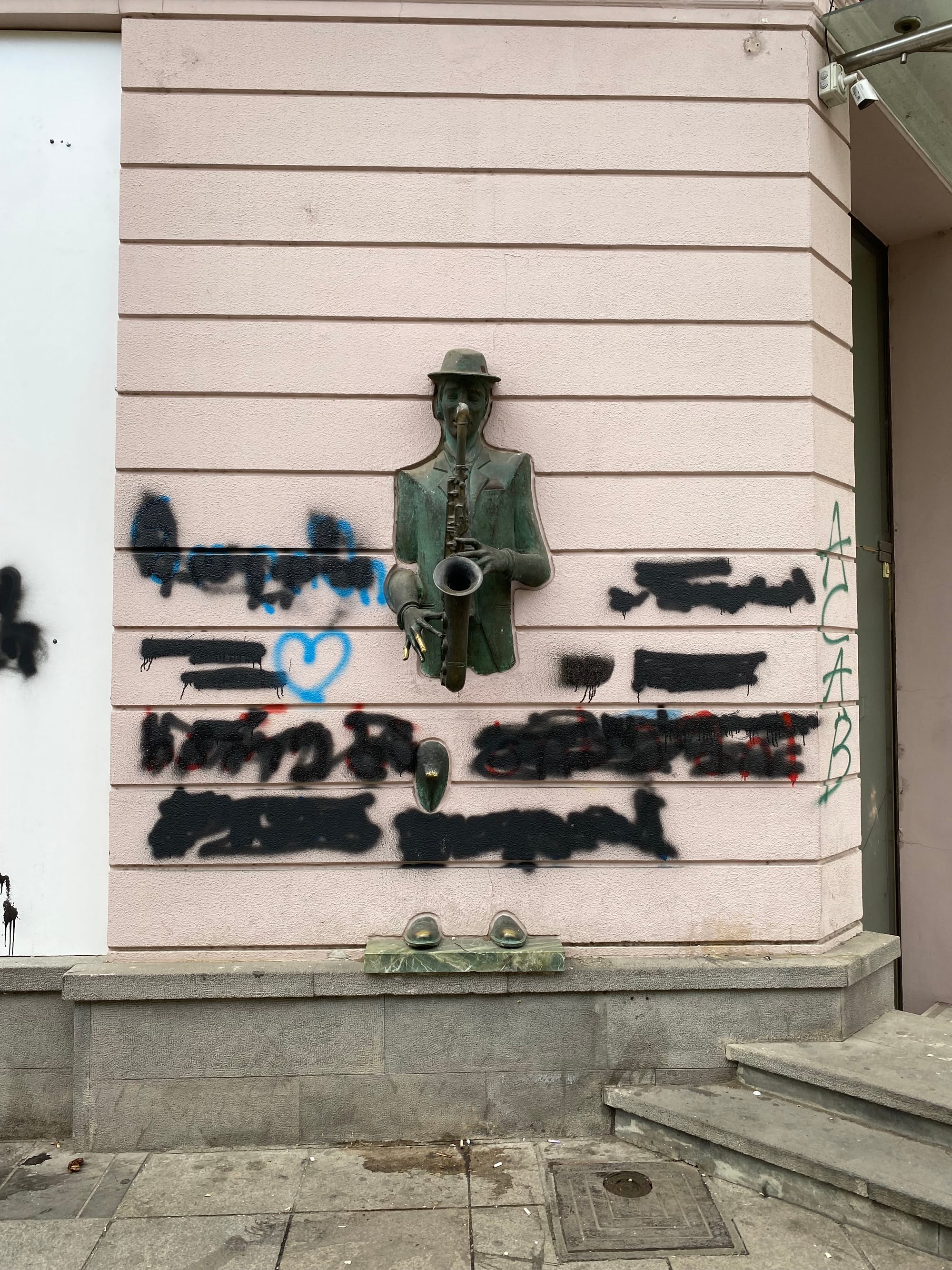

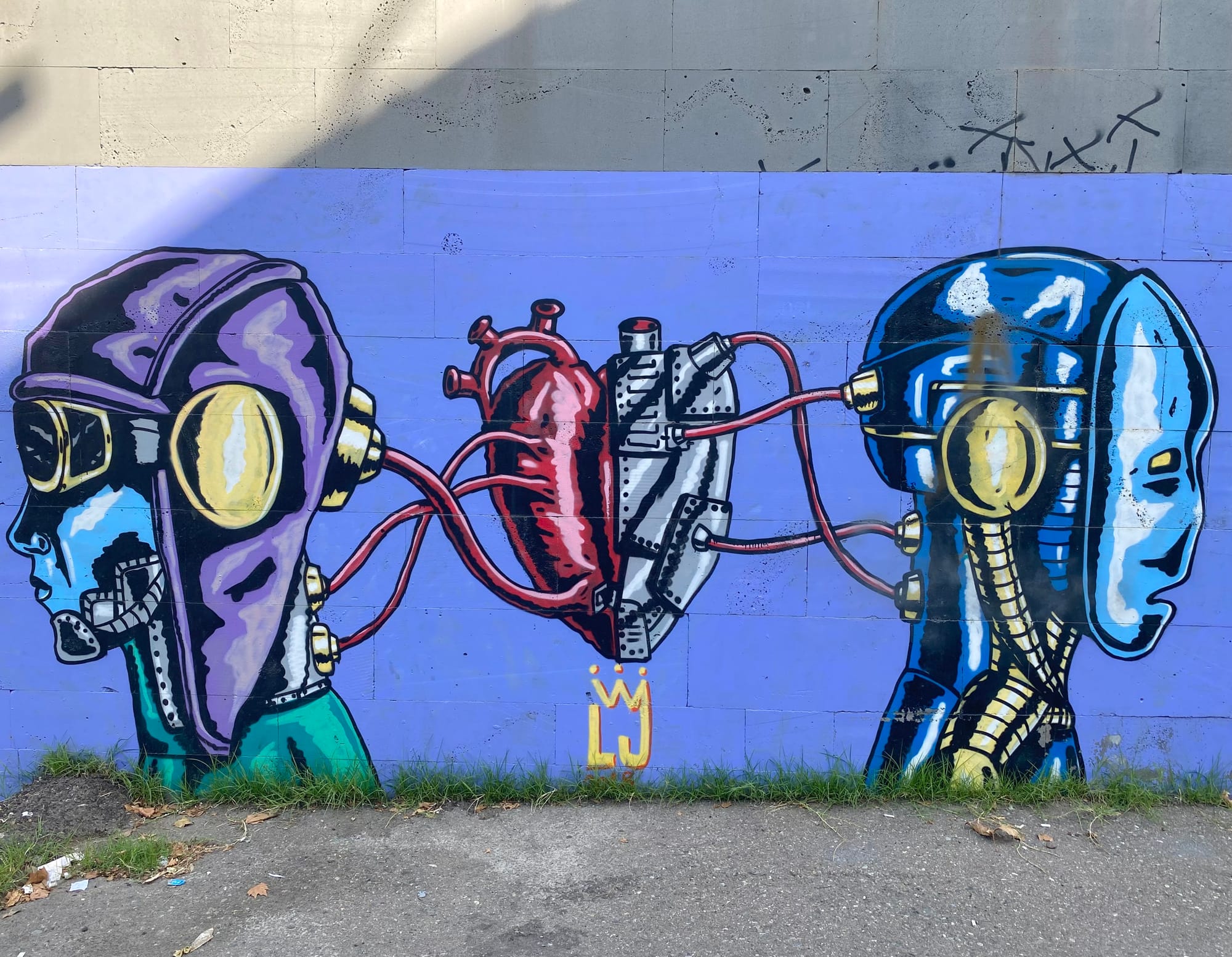
(l) the aftermath of protests; (c) political graffiti pre-protests; (r) futurist art (photos by kjd, Tbilisi 2024)
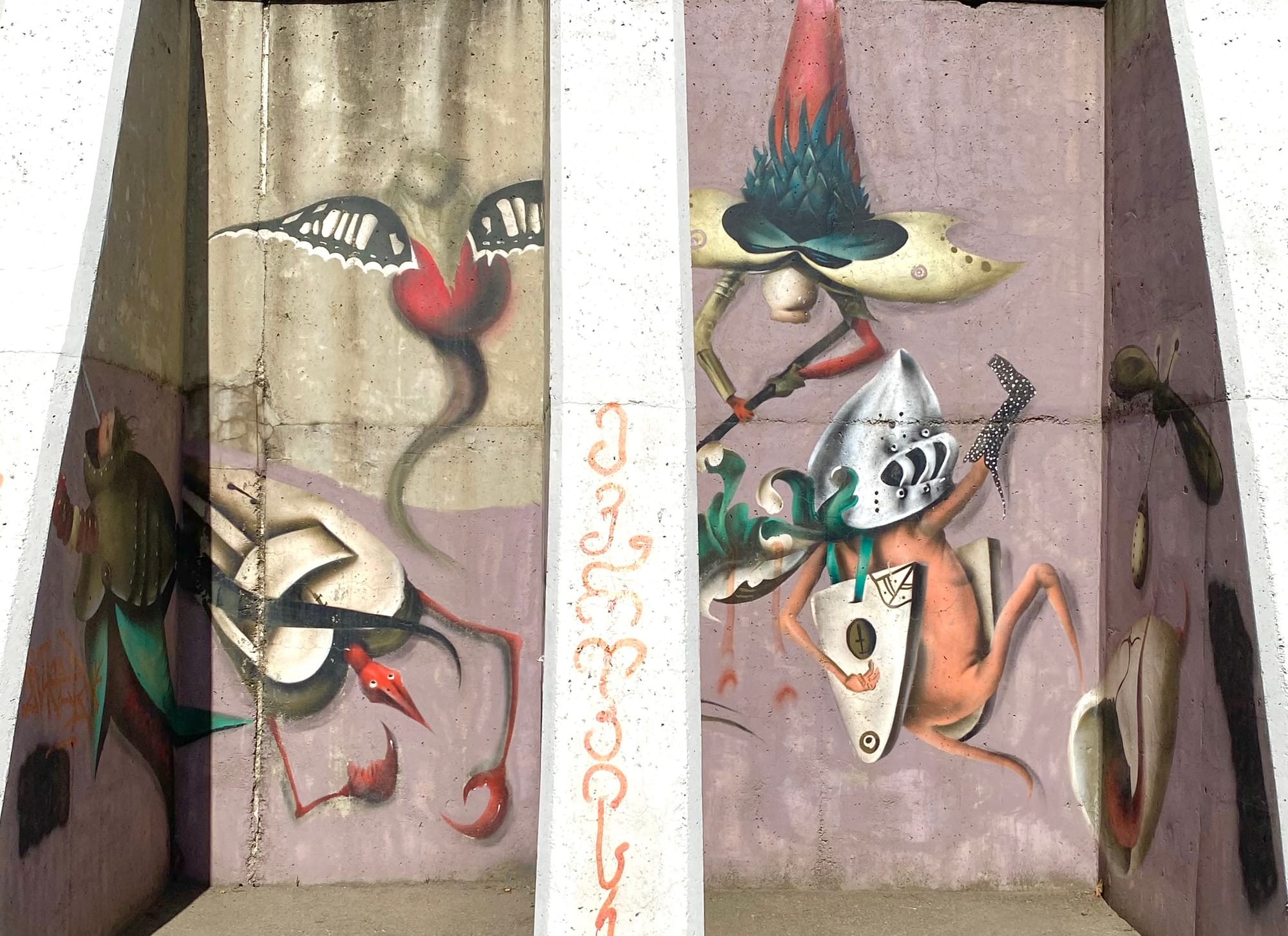
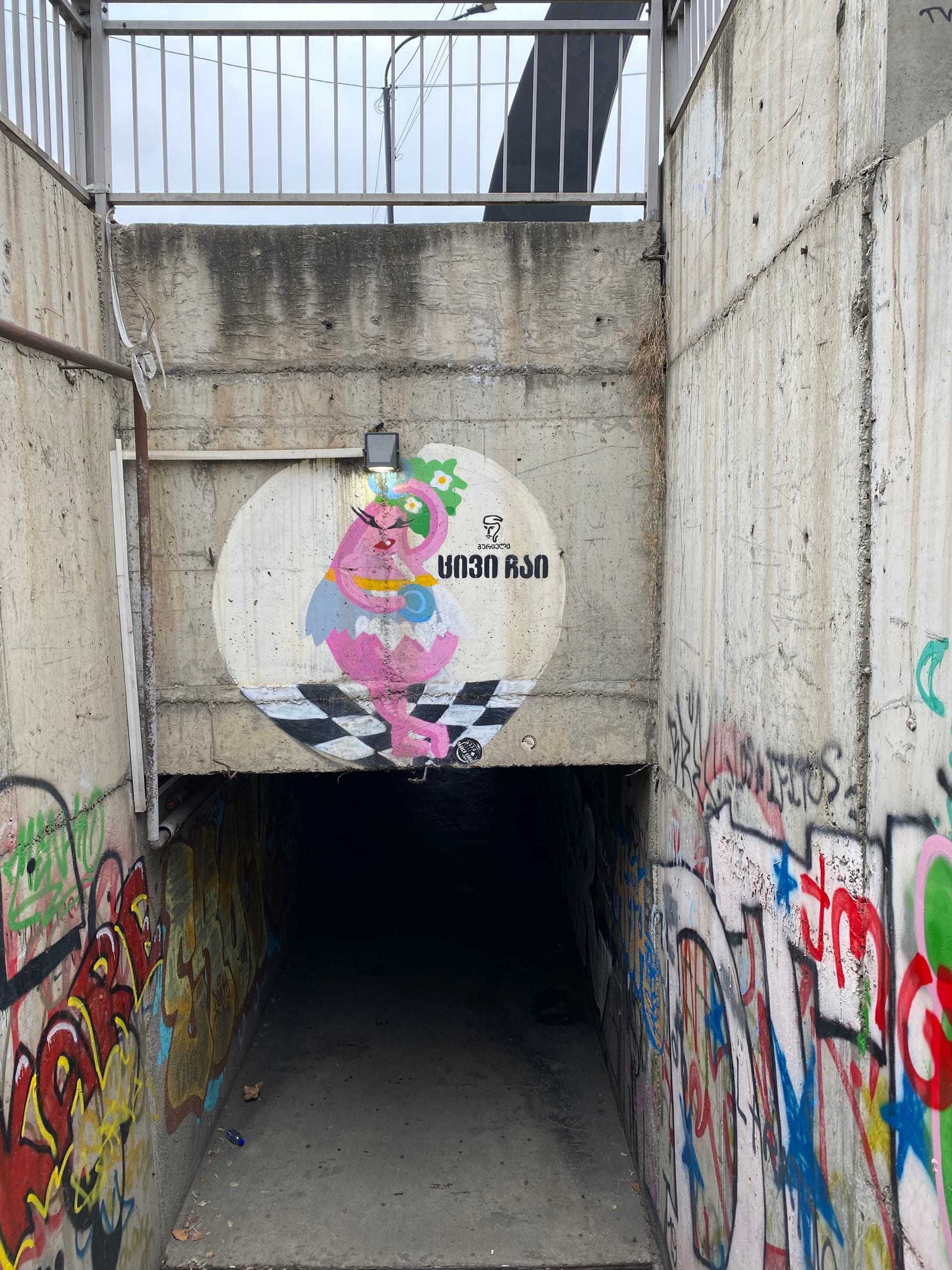
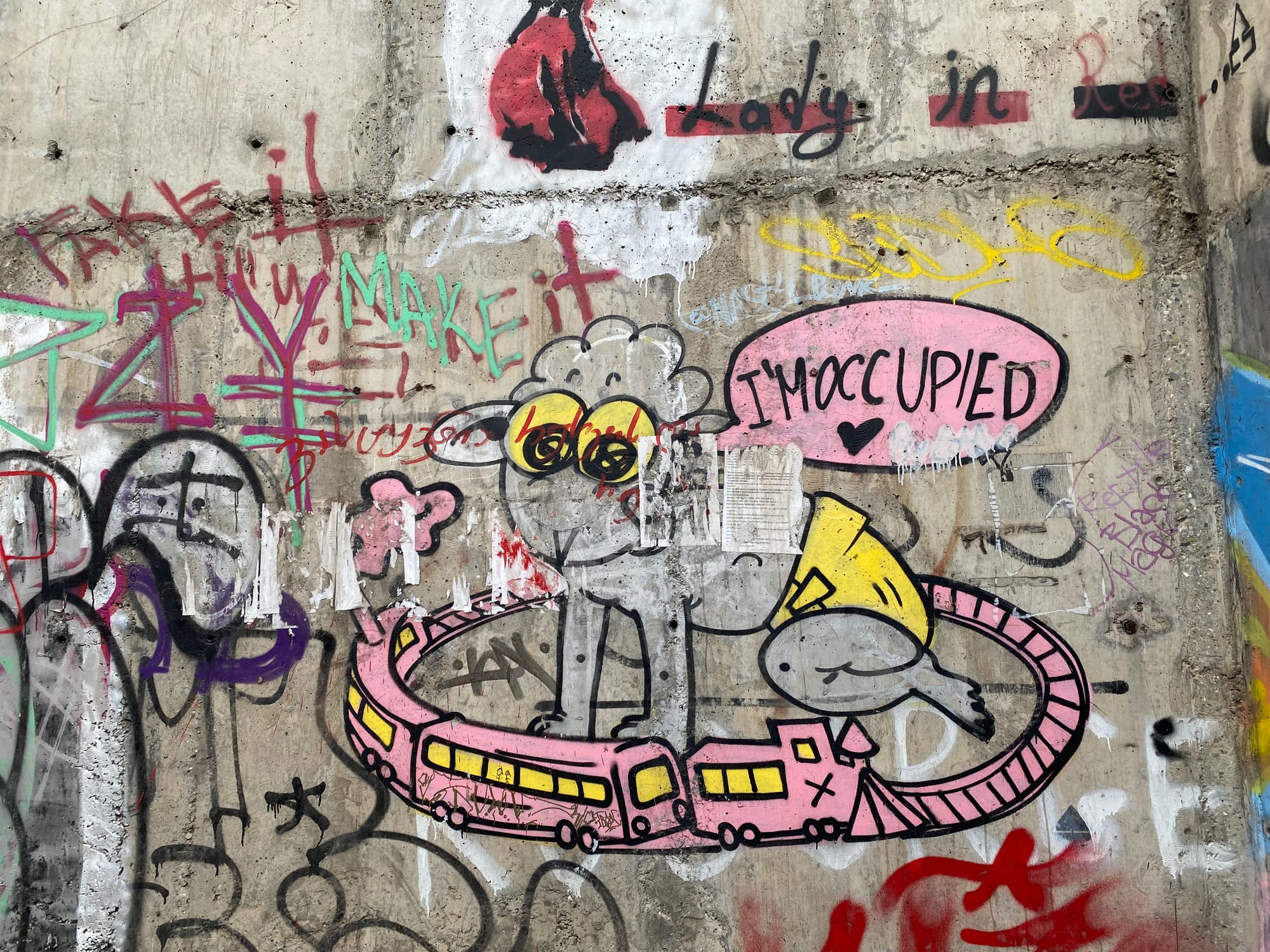
(l) random graffiti art; (c) entrance to a tunnel; (r) "I'm Occupied" (photos by kjd, Tbilisi 2024)
What’s truly captivating is how this graffiti decorates the bases of old statues and some historic monuments, creating a stunning visual conflict between the ancient and the modern. It’s like the city’s past is locked in conversation with its future—old stone carved with tales of medieval legends rubbing shoulders with futurist imagery and chaotic, colorful bursts of creativity. One minute you’ll see a medieval scene depicting a long-lost tale, somehow still relevant with its modern moral. The next, you’re face to face with an unexpected cast: Darth Vader standing next to Charlie Chaplin, with Nostradamus looming nearby like some cosmic prank. It’s random, it’s surreal, and it’s perfectly Tbilisi.
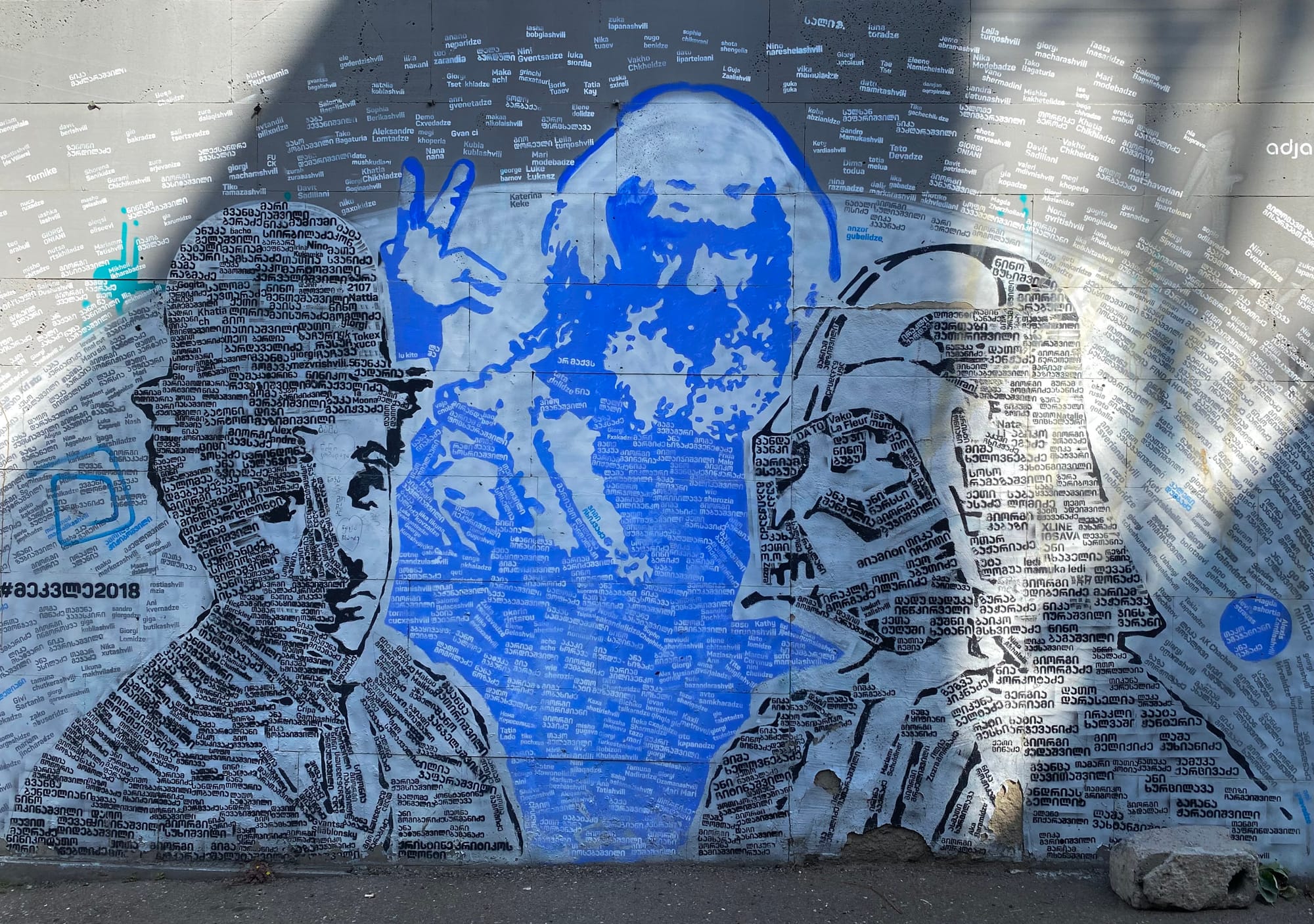
And then there are the words—oh, the words! Walls covered in scrawled slogans, poetry, cries for justice, and passionate manifestos. At first glance, it may look like a jumble of phrases (in English and Georgian—even in Russian), but give it a moment, and you realize each word is a heartbeat, a plea, a rallying cry. They demand that you stop, listen, and try to understand the layers beneath the paint.
Towards the end of our trip, as protests swelled, some of this vibrant storytelling tipped into what felt like art pollution—graffiti clashed harshly against beautiful architecture, disrupting the delicate balance. But for the most part, the street art is a remarkable, living gallery that celebrates the spirit of a people who refuse to be silent. It’s a masterclass in storytelling, with each wall a stanza, each alleyway a chapter.
In Tbilisi, graffiti isn’t just vandalism. It’s history, politics, culture, and humor rolled into one. It’s a city’s soul splashed across stone and plaster, daring you to look, think, and maybe even smile.
The Aftermath of Protests
Following several night of protests, Rustaveli is a transformed and destroyed street (photo by kjd, Tbilisi 2024)
